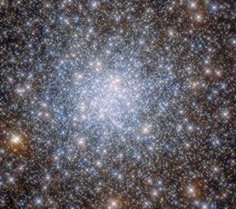Aug. 22 () –
Astronomers frequently observe carbon monoxide in planetary nurseriesbut for a decade something does not add up in the observations of the carbon monoxide, Says Diana Powell, NASA Hubble Fellow at the Center for Astrophysics | Harvard and Smithsonian. If astronomers’ current predictions about its abundance are correct, a large amount of carbon monoxide is missing from all observations of the disks..
Now, a new model, validated by ALMA observations, has solved the mystery by discovering carbon monoxide hidden in ice formations within the disks, as published in the journal ‘Nature Astronomy’. It is an ultra-bright compound and extremely common in protoplanetary disks, making it a prime target for scientists.
“This may be one of the biggest unsolved problems in planet-forming disks. explains Powell, who led the study. Depending on the system observed, carbon monoxide is three to 100 times lower than it should be; it’s off by a really huge amount.”
And the carbon monoxide inaccuracies could have huge implications in the field of astrochemistry. “Carbon monoxide is essentially used to map out everything we know about disks, such as mass, composition, and temperature. Powell points out. This could mean that many of our disc results have been biased and uncertain because we don’t understand the compound well enough.”
Intrigued by the mystery, Powell put on her detective hat and leaned on her expertise in the physics behind phase changes, when matter changes from one state to another, like a gas becoming a solid.
On a hunch, Powell modified an astrophysical model currently used to study the clouds of exoplanets, that is, planets beyond our solar system.
“The really special thing about this model is that it has detailed physics of how ice is formed in the particles. –Explain–. For example, how ice nucleates into small particles and how it condenses. The model carefully tracks where the ice is, what particle it’s in, what size the particles are, what size they are, and then how they move.”
Powell applied the adapted model to planetary disks, hoping to generate a deep understanding of how carbon monoxide evolves over time in planetary nurseries. To test the model’s validity, Powell compared its results with actual ALMA observations of carbon monoxide in four well-studied disks: TW Hya, HD 163296, DM Tau, and IM Lup. And the results and the models worked very well, says Powell.
The new model matched each of the observations, showing that all four disks were not lacking in carbon monoxide at all, but had turned into ice, which cannot currently be detected with a telescope.
Radio observatories like ALMA allow astronomers to see carbon monoxide in space in its gas phase, but ice is much more difficult to detect with current technology, especially large ice formations, he says.
The model shows that, unlike previously thought, carbon monoxide is forming in large ice particles, especially after a million years. Before a million years, gaseous carbon monoxide is abundant and detectable in the disks.
“This changes the way we thought ice and gas were distributed in disks,” says Powell. It also demonstrates that detailed modeling like this is important for understanding the fundamentals of these environments.“.
Powell hopes his model can be further validated using observations with NASA’s Webb telescope, which may be powerful enough to eventually detect ice in the disks, but that remains to be seen.




![[Img #74674]](https://thelatestnews.world/wp-content/uploads/2024/12/Santiago-Ramon-y-Cajal-The-promoter-of-modern-neuroscience-150x150.jpg)








![[Img #74674]](https://thelatestnews.world/wp-content/uploads/2024/12/Santiago-Ramon-y-Cajal-The-promoter-of-modern-neuroscience-300x200.jpg)


Add Comment